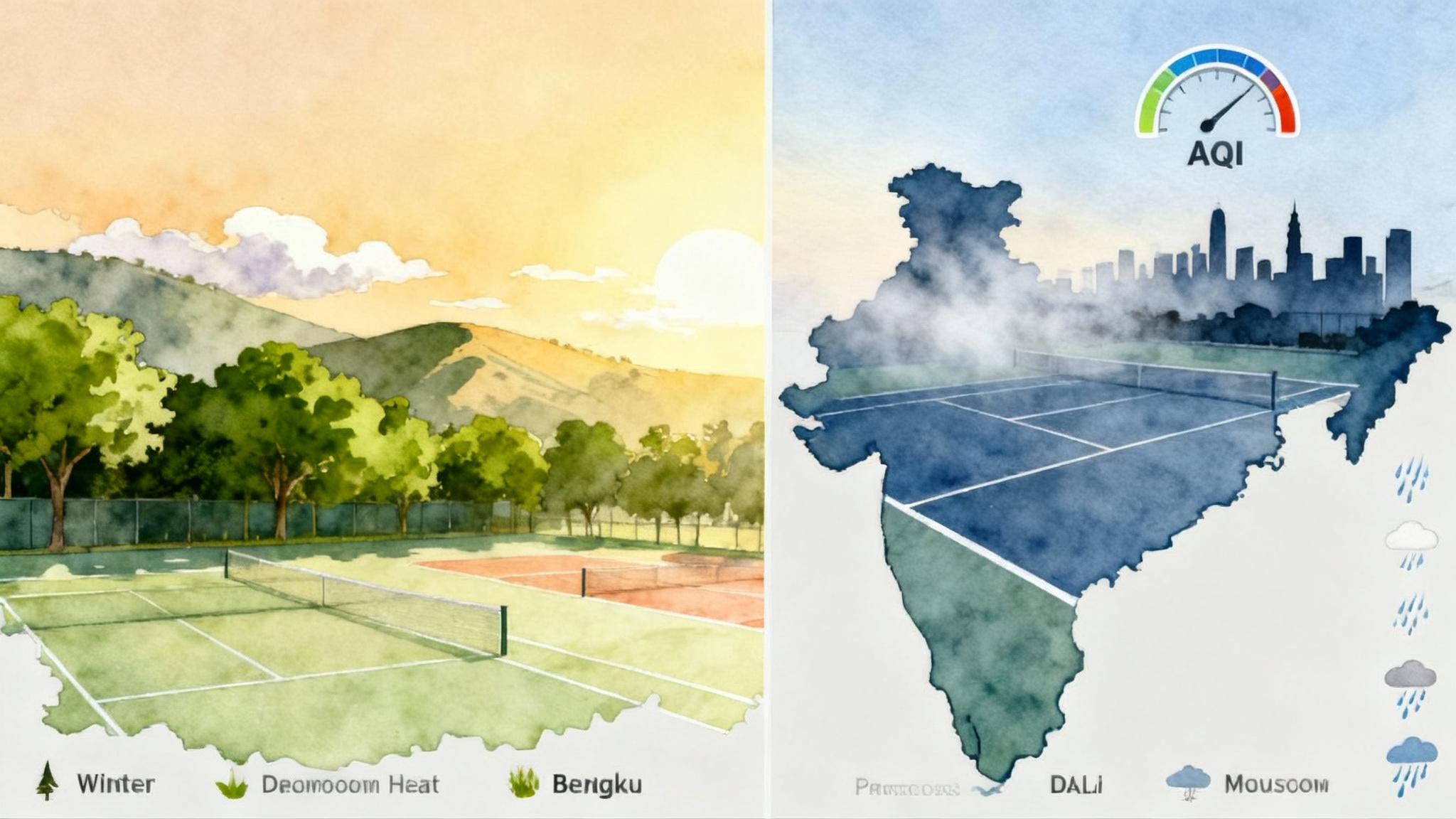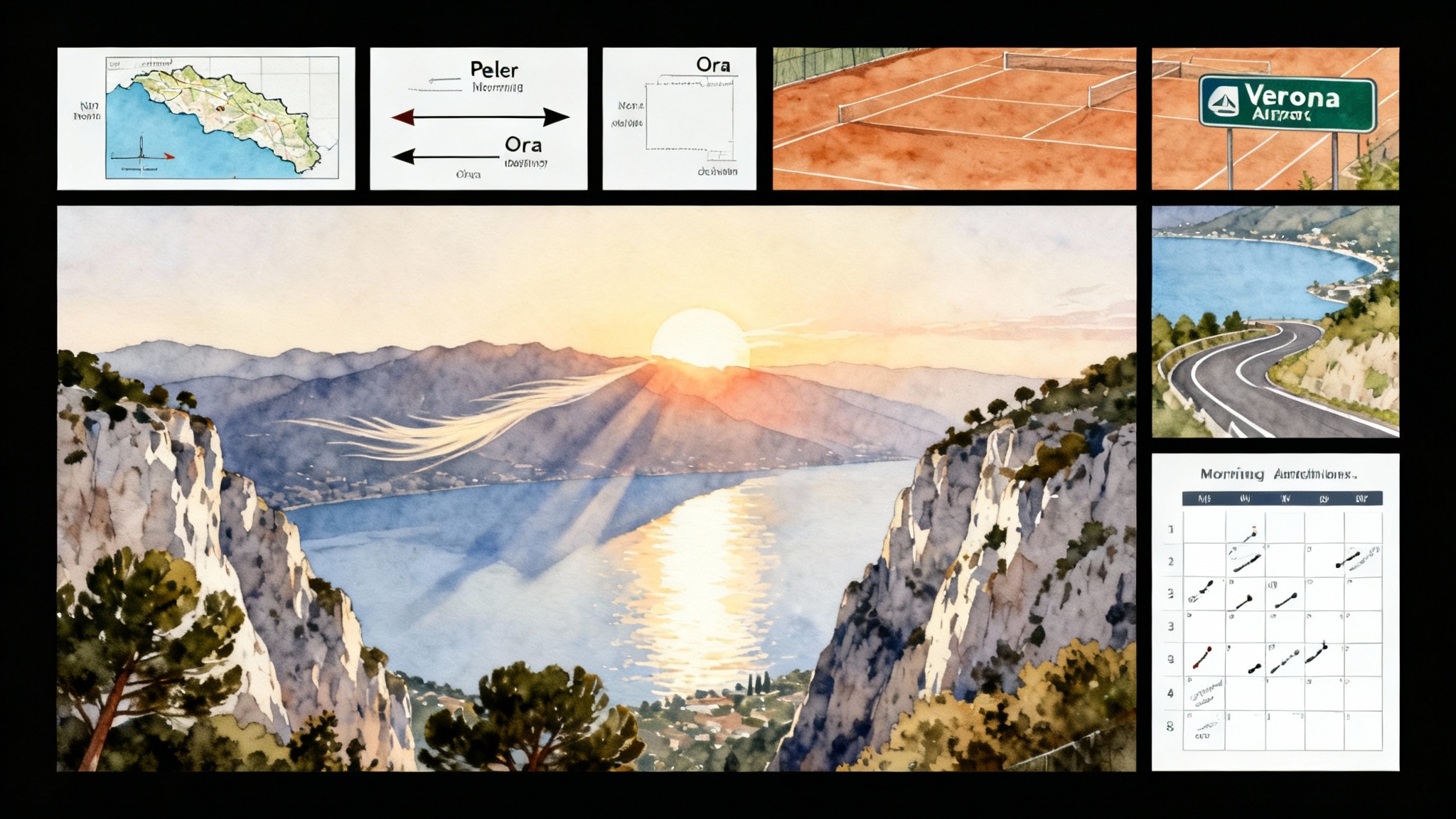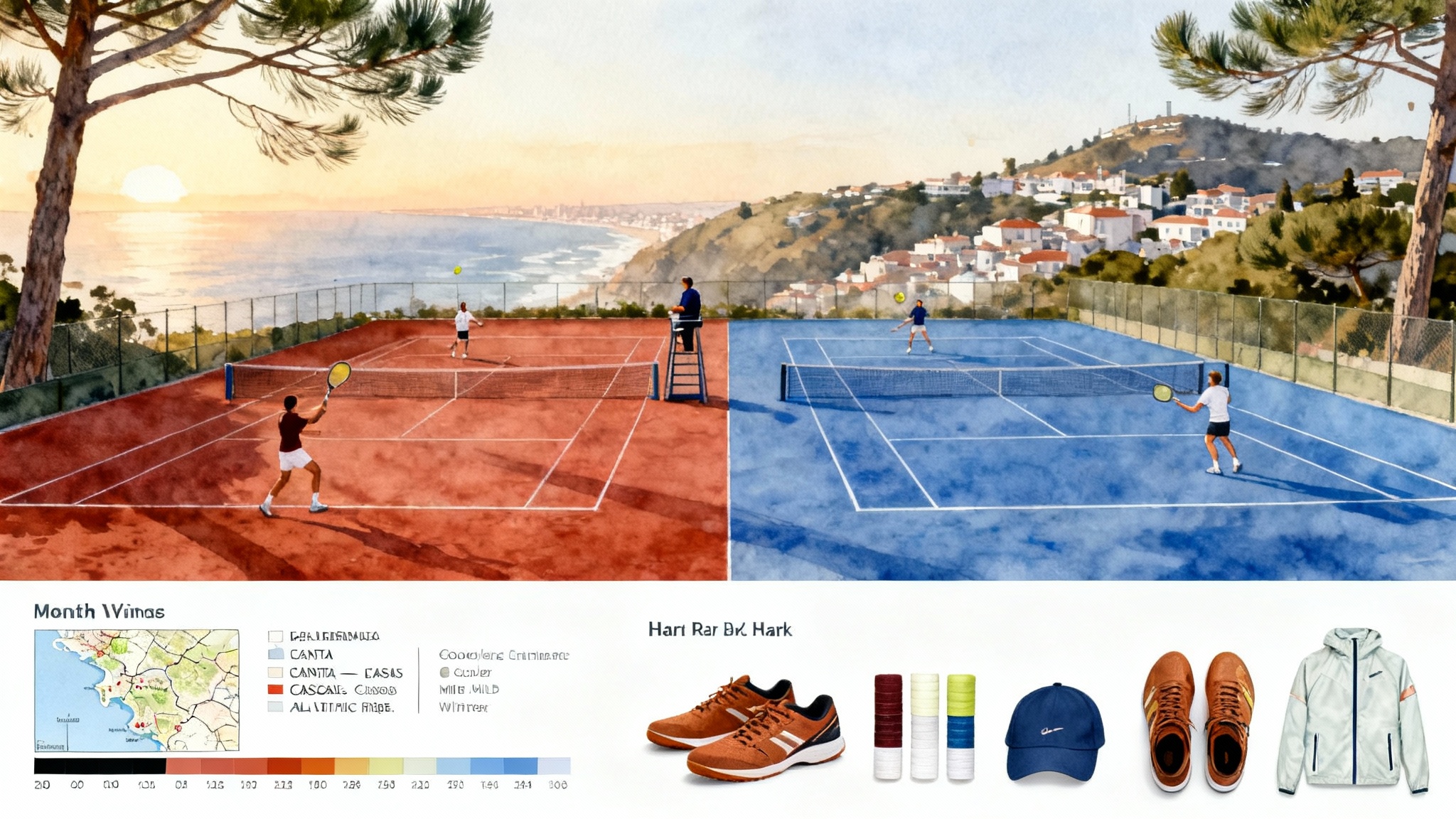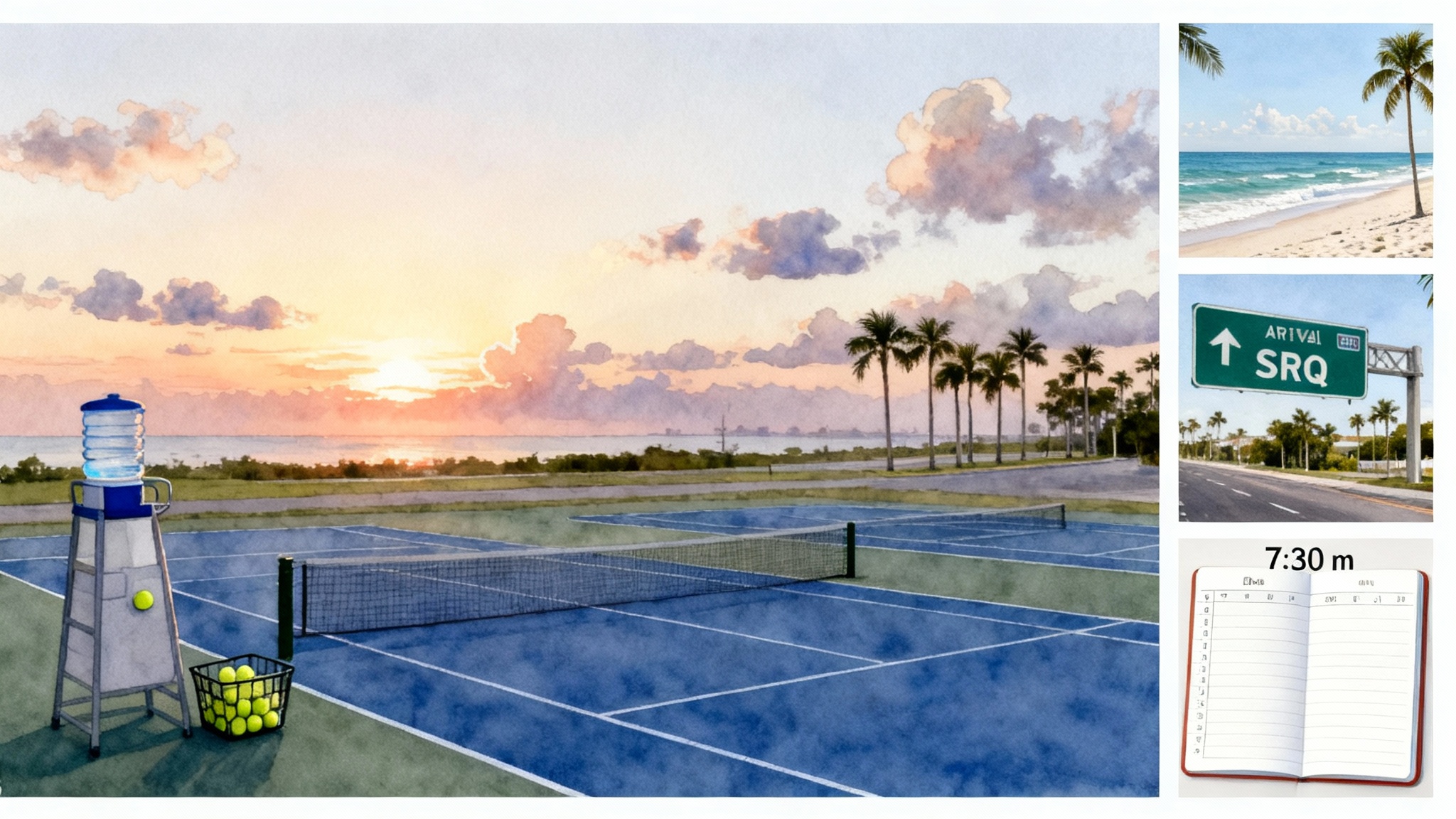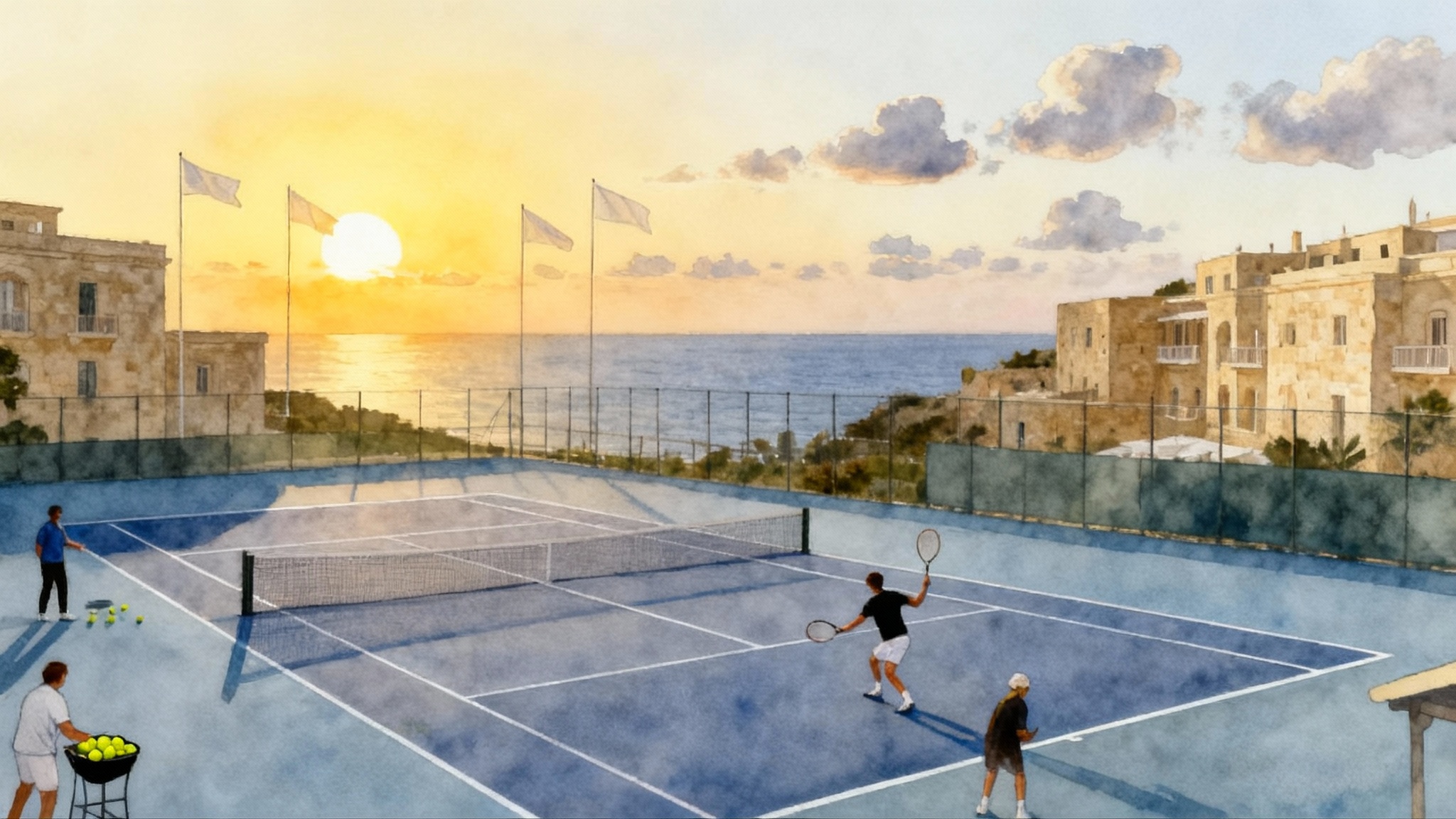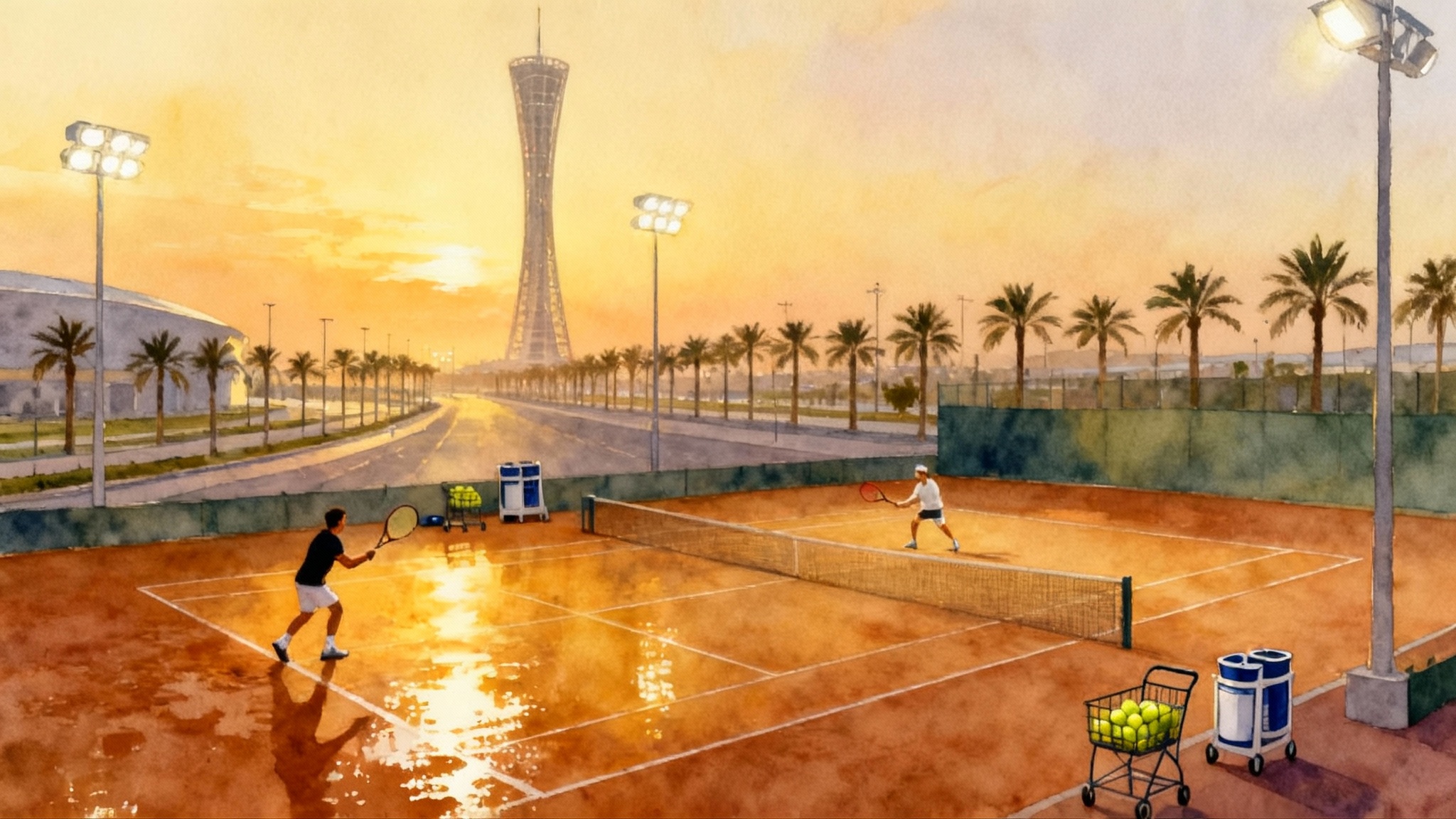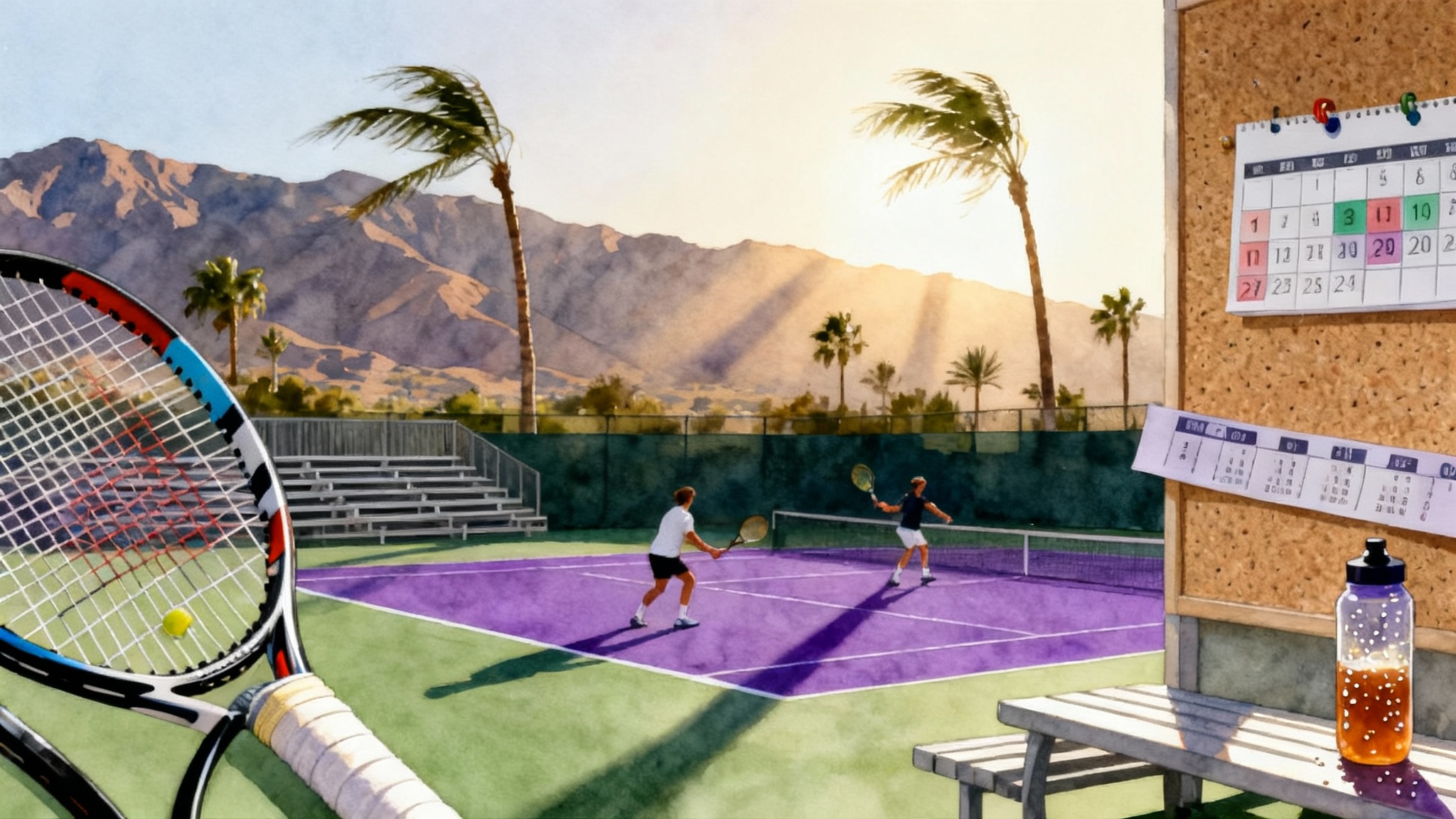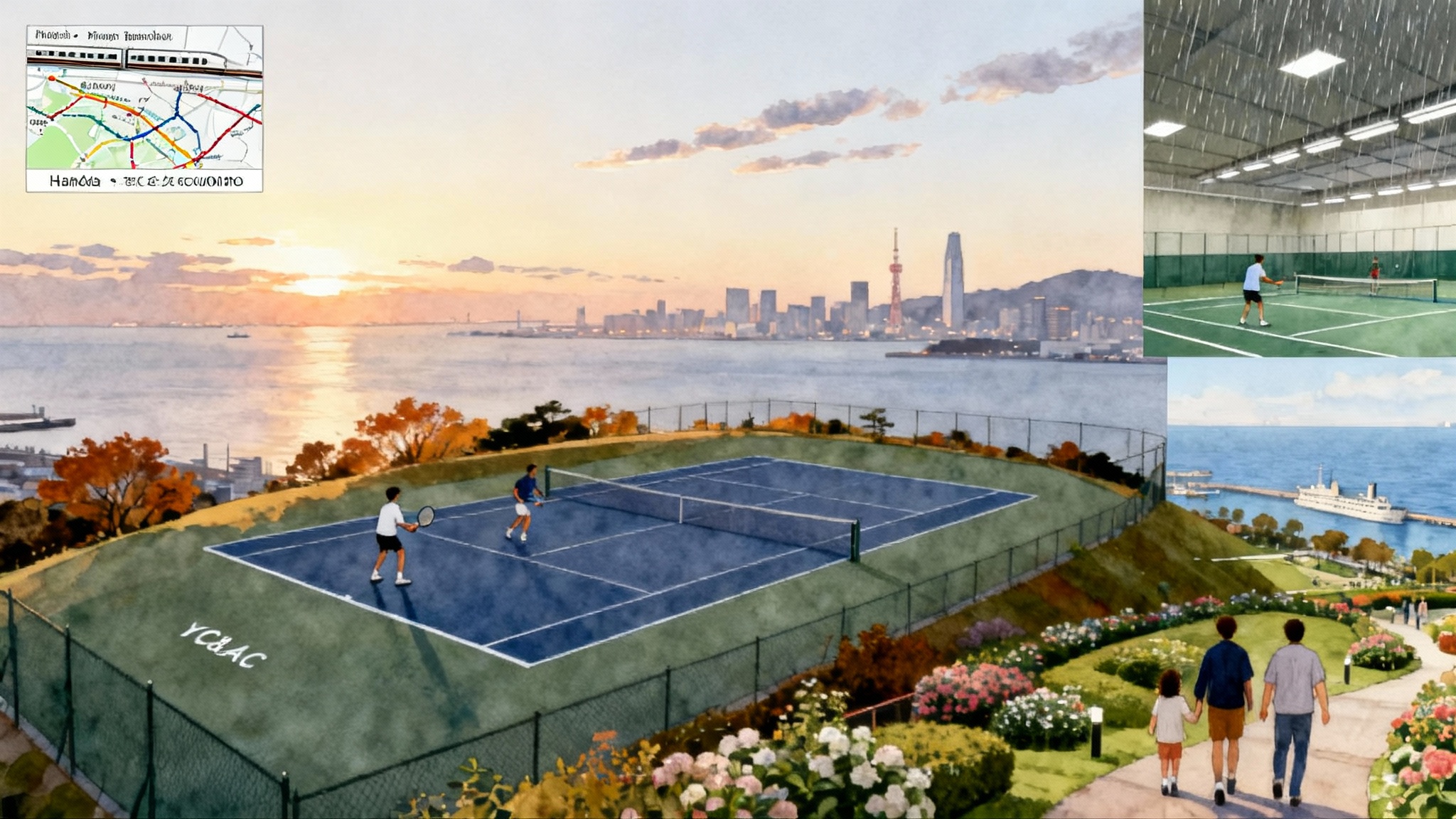Madrid 2026 Shoulder-Season Clay at Ciudad de la Raqueta
Plan a performance block in Madrid during March–May or September–October. Dry air, high altitude, and indoor clay at Ciudad de la Raqueta make the clay play faster, with reliable court access, UTR match play, and easy travel from the United States.
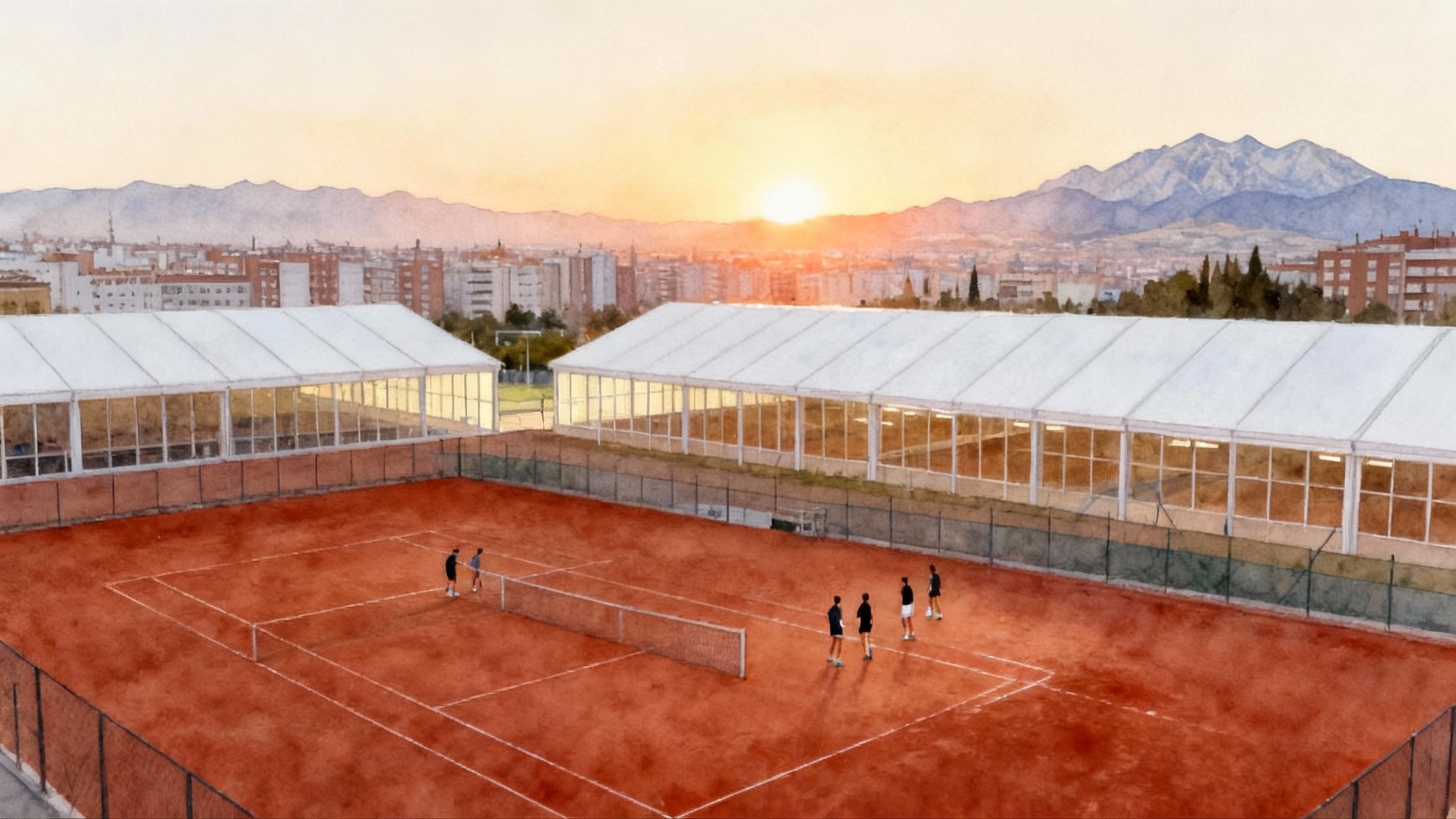
Why Madrid’s spring and early autumn are a coach’s dream
If you want a block of training that actually changes your tennis, target Madrid in the shoulder seasons. From March to May and again from September to October, the Spanish capital pairs cool mornings with dry afternoons, near-zero humidity spikes, and far less rain than coastal Spain. At roughly six hundred and fifty meters above sea level, the air in Madrid is thinner than at sea level. Balls move through that air with less drag and less spin-induced lift, which means your shots travel faster and penetrate the court with a little extra zip. On clay this combination is rare: the surface still lets you slide and build points, yet the ball does not bog down.
The result is a practice environment that rewards proactive footwork, early contact, and confident acceleration. Players feel it by day two: serves jump, forehands carry, and defensive floats sit up just enough to be punished. That feedback loop is exactly what you want when you are using a two-week block to lock in new patterns for the summer or a fall college season.
The venue advantage: abundant courts and indoor clay
The shoulder-season idea only works if you can count on court time. That is where Ciudad de la Raqueta helps. The complex in northern Madrid offers a large inventory of tennis courts, including indoor clay, plus a dedicated stadium court. The indoor halls are a genuine backup when a spring shower passes through or an autumn breeze picks up. You keep the clay-specific footwork and timing without losing a session to weather. You can confirm the layout on the Ciudad de la Raqueta facilities page, and you can get a fuller picture of programs and access in our Ciudad de la Raqueta profile.
Think of the place like a university campus for rackets: the walking is easy, check-in and changing rooms are efficient, and there is on-site food for quick refuels. Because there are many courts, you can run technique pods in the morning without squeezing, then flip to open point play in the afternoon. That flexibility is the difference between a good camp and a great performance block.
Dry air and altitude: what quicker clay means in practice
Quicker clay is more than a vibe. Here is what the conditions do to your ball and body:
- Lower air density reduces drag. A ball hit with the same swing speed will travel a little faster and slightly deeper. Players who tend to leave balls short at sea level suddenly find their depth.
- The Magnus effect is a touch weaker. Topspin still matters, but very heavy topspin creates a bit less downforce than on a humid, sea-level day. That nudges you toward higher racquet-head speed and focus on net clearance rather than excessive spin for its own sake.
- Dry clay stays firm. The bounce is cleaner and timing is predictable, so you can drill first-strike patterns without the stop-start feel that heavy moisture brings.
- Respiratory comfort often improves. Dry mornings help high-intensity footwork, and you sweat less for a given workload than you would in coastal humidity. Hydration and electrolytes still matter, but the perceived exertion curve is kinder.
In simple terms: Madrid in spring and early autumn lets you train clay skills at a tempo that resembles hard-court match play. That is valuable because your decision-making and contact points do not slow down.
The ideal daily rhythm: technique in the morning, points in the afternoon
A shoulder-season day in Madrid is built around temperature and light.
- Morning technique, two hours: grooved footwork on short cross patterns, serve trajectories, and returns by height window. Use cones and court targets to force foot positioning. On clay, start every sequence from a split-step to a controlled slide and recover; the goal is balance on the last step before contact.
- Midday gym and video, ninety minutes: mobility and trunk rotation strength, then ten to fifteen minutes of match-clip review. Pick one decision per player to improve that afternoon, such as replacing a neutral backhand line with a safer cross-court window on defense.
- Afternoon point play, two hours: start at half court for twenty minutes to raise tempo, then full-court drills with constraints. Examples: serve plus one where the plus one must land cross-court; breaker sets to seven in which you lose two points if you hit short middle; pattern-in, pattern-out where the first two balls are scripted and the point then opens.
- Evening recovery, forty-five minutes: low-intensity walk, calf and adductor mobility, and five minutes of breath work to downshift.
Why this split works: mornings in Madrid are crisp and focused, perfect for precise technique. By midafternoon the temperature rises a touch and light improves, which suits longer rallies and competitive sets. If rain appears, indoor clay keeps point play on schedule.
A two-week template you can lift and run
Here is a performance-block structure that suits players from high-level juniors to college athletes and ambitious adults.
- Day 1: arrival hit and movement reset. Thirty minutes of court-feel work, then one hour of serves and returns. Early night.
- Day 2: baselines and height windows. Morning three-ball patterns on both wings. Afternoon tie-break sets with a second-serve focus.
- Day 3: forehand plus forehand. Morning inside-out footwork, afternoon games to eleven with forehand targets only. Evening video clips of five rally starts per player.
- Day 4: backhand durability. Morning backhand cross stability, afternoon two-on-one defense sets. Optional lift or pool session.
- Day 5: net transitions. Morning approach footwork and first volley depth, afternoon short-set ladders starting 15-30 down.
- Day 6: serve patterns. Morning deuce-side slice plus backhand patterning, afternoon match play with serve-location scorekeeping.
- Day 7: light day. Thirty-minute court feel, mobility, city walk.
- Day 8: repeat cycle with higher tempo, add shot tolerance goals and contact-point auditing.
- Day 9-13: three training days, one lighter day, two match-heavy days. Adjust based on readiness.
- Day 14: competitive close, recorded matches for take-home feedback.
If you are preparing for National Collegiate Athletic Association fall events or a European summer circuit, this two-week template builds first-strike patterns while preserving clay movement mechanics. It also fits adults aiming at national age-group events who need volume without overuse.
UTR match play options: how to slot in verified matches
Most players want verified results during a training block. Madrid delivers. The city regularly hosts Universal Tennis Rating events ranging from single-day match play to flex leagues and junior circuits. Event calendars change month by month, so the best method is to search by location and date on the Universal Tennis platform and filter for the weeks you will be in town. The step-by-step process is outlined in the Universal Tennis event guide.
Practical way to integrate verified matches:
- Book your training block first. Pencil two potential match days per week. Do not stack a match directly after a maximal on-court load day.
- Register for two to four UTR events across your stay, skewing toward the second week once you have adapted to the courts and time zone.
- Use match days to test one or two specific patterns that you have trained. For example, deuce-court body serve plus forehand into the open court. Rate your execution after each set.
- If you are traveling with a team, split your group across different draws so everyone gets varied opponents and avoids teammate matchups.
Madrid logistics from the United States: easy in, easy out
- Flights: Madrid Barajas Airport offers nonstop overnight flights from major United States gateways on both American and European carriers. The airport sits northeast of the city with direct highway access to the northern districts.
- Getting to the courts: Ciudad de la Raqueta is in the Montecarmelo area in the north of Madrid. A ride-share or taxi is straightforward from the airport. Public transport works as well if you are staying near the northern metro and commuter rail lines.
- Neighborhoods to stay: Montecarmelo is the closest for short commutes. Las Tablas and Sanchinarro are convenient too. Chamartín gives you more hotel options and quick access to the M-30 ring road.
- Time zone and sleep: if you leave the East Coast in the evening, you land in the morning. Plan a ninety-minute nap after your arrival hit, then an early dinner and lights out. By day two you will be close to normal.
- Food and recovery: the city is full of Mediterranean options that suit athletes. Keep lunchtime light to preserve afternoon energy. Many apartments and hotels near the venue have access to supermarkets and simple kitchens, which makes breakfast and snacks predictable.
If you prefer a U.S. dry-air alternative for a shorter trip, compare notes with our Indian Wells desert tennis guide.
Madrid versus coastal Spain: wind and humidity
Coastal Spain is beautiful, and if you need a mid-winter base the coast can be warmer. But for shoulder-season performance blocks, Madrid wins on two variables that matter on clay: wind and humidity.
- Wind: coastal venues see reliable onshore breezes, especially in late spring afternoons. That pushes tosses around and makes neutral balls move unpredictably across the baseline. Madrid is inland and sheltered by surrounding plateaus, so wind tends to be milder and more consistent.
- Humidity: sea-level humidity softens the felt and slows the ball. On clay that can turn twenty-ball rallies into thirty-ball rallies and make serves sit down. Madrid’s drier air keeps the clay crisp and the ball lively. Players who rely on first-strike patterns, improved serve pace, and quick transition benefit immediately.
This does not mean you should never use the coast. If your goal is to grind tolerance or build lungs, humid sea-level sets on the coast are useful. If your goal is to sharpen weapons while keeping clay footwork, Madrid’s shoulder seasons are better. For a coastal plan with mild weather, see our Sintra Cascais tennis base guide.
What to bring and how to prepare
- Strings and tensions: bring an extra reel. Many players drop one to two kilograms of tension compared with sea level to add bite on the ball, then nudge up if depth control becomes too easy in the thin air.
- Shoes: a dedicated clay outsole is a must. Pack a second pair so you can rotate and keep the tread fresh for sliding and braking.
- Hydration: the air is dry. Use electrolyte tabs or a premixed solution. A simple rule is one large bottle per hour on court plus a smaller bottle during gym or video.
- Sun and skin: mornings can feel cool, which fools players. Wear a cap and apply sunscreen before the first hit.
- Video and notes: assign one player each day to capture key drills on a smartphone. Short clips drive better recall than long files you never review.
How to book and sequence your week at Ciudad de la Raqueta
- Reserve morning courts as early as possible, especially for indoor clay if you are traveling in March. Keep one indoor slot per week as a backup even in September and October.
- Build a simple lane structure for your group: one court for serves and returns, one for forehand patterns, one for backhand stability, and one for approach and volley. Rotate every thirty to forty minutes.
- Lock a stadium-court session later in the week if you can. The visual of a show court changes how players manage nerves and space. Use that session for recorded sets with a chair umpire and scoreboards to simulate match rhythm.
The upshot
Putting it all together, Madrid’s shoulder seasons give you a rare trifecta: a climate that makes clay play quick, a facility with the courts and indoor backup to guarantee reps, and a city that is easy to reach and easy to live in for two weeks. Build your days around morning technique and afternoon points, sprinkle in verified match play through Universal Tennis, and your training block will feel like a mini season rather than a vacation.
The highest compliment to any training venue is simple. You arrive with a plan, and the place gets out of your way. In 2026, Madrid in spring and early autumn does exactly that.
